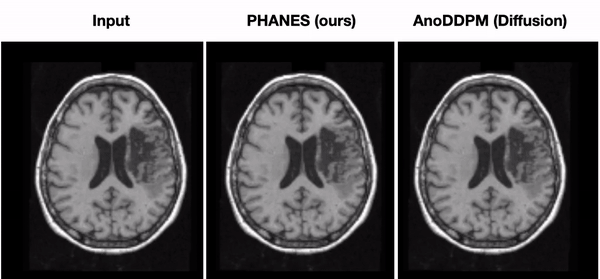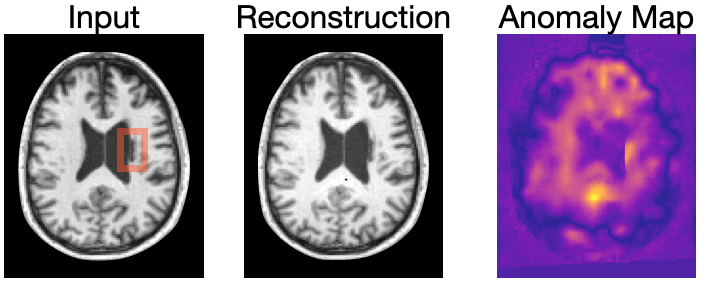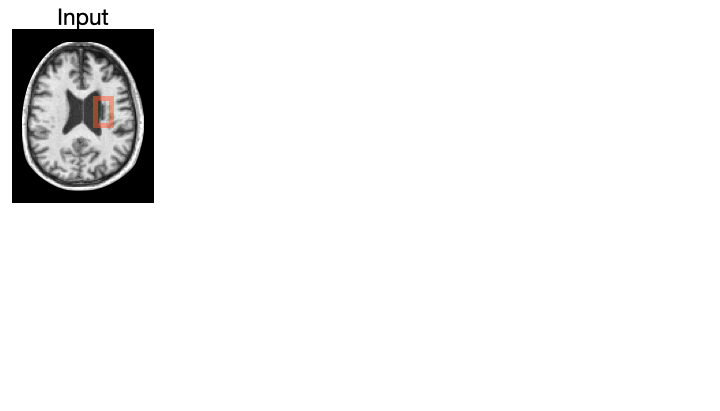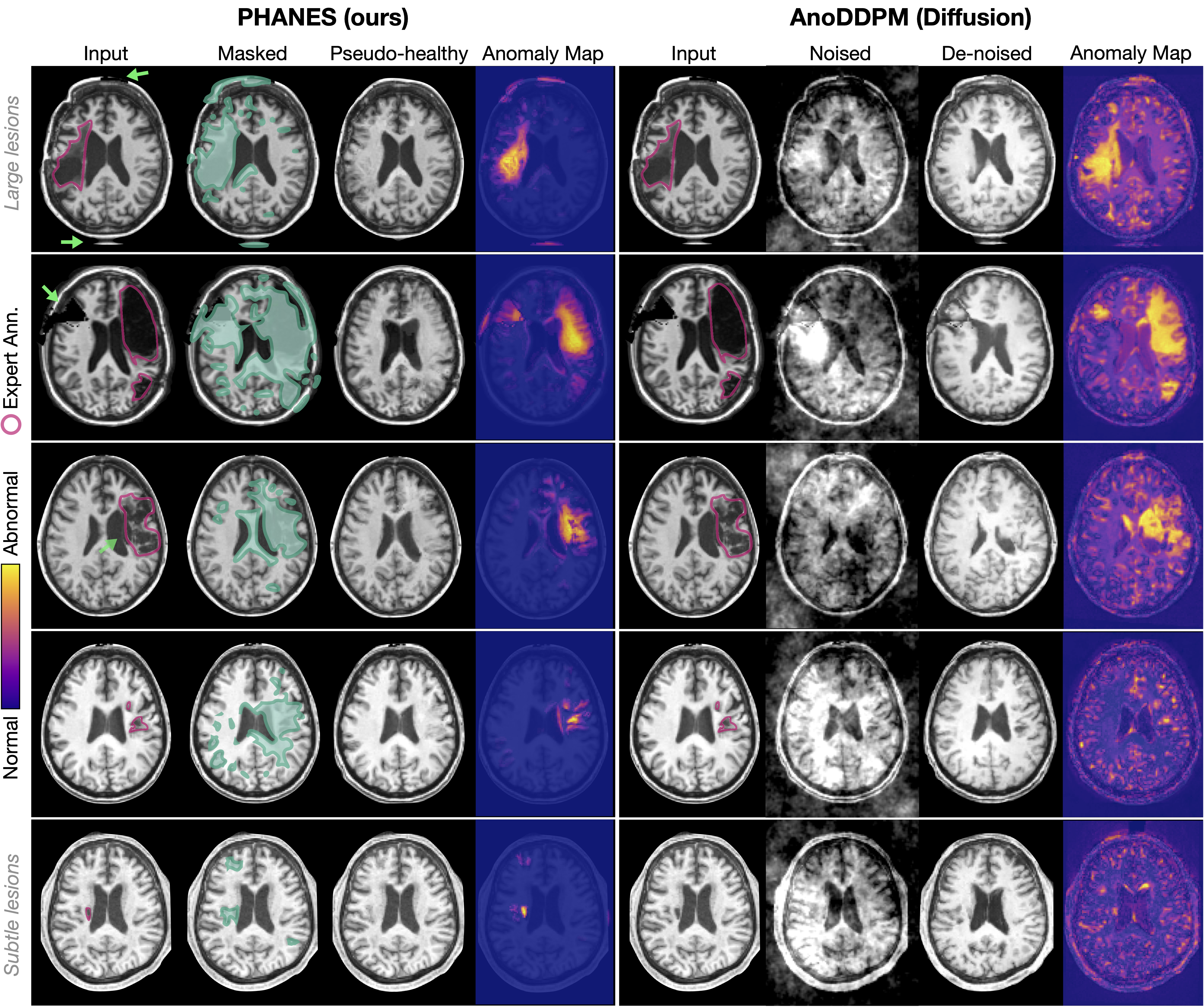PHANES

Reversing the Abnormal: Pseudo-Healthy Generative Networks for Anomaly Detection

The goal of this project is to reverse anomalies, i.e., preserving healthy tissue and replacing anomalous regions with pseudo-healthy (PH) reconstructions.
The limitations of current unsupervised reconstruction-based methods (including recent diffusion models) are to find the right balance between learning the healthy distribution and accurately restoring input images from latent representations. On one hand, some methods may lack sufficient constraints, potentially missing relevant cases that require urgent care. For example, auto-encoders that are not constrained to the healthy distribution, i.e., large bottlenecks or diffusion models that employ low levels of noise will fail the task by also reconstructing anomalies. See the example bellow where de-noising auto-encoders wrongly reconstruct the lesion close to the right ventricle:

On the other hand, the high false positive rates observed in constrained systems can lead to the unnecessary referral of healthy patients to specialists, resulting in increased healthcare costs and potential strain on medical resources. See examples below, where variational auto-encoders (VAE), soft-introspective VAEs, and diffusion models with large levels of Simplex noise ($t$=250) produce many false positive detections due to inaccurate reconstructions:

This work introduces a novel framework that combines constrained and spatially preserving approaches to maintain the identity of healthy tissues while replacing abnormal areas with pseudo-healthy generations based on healthy contexts. Our modular framework comprises two main components. Initially, constrained networks are employed to estimate an initial pseudo-healthy reconstruction as well as anomaly maps. However, these initial reconstructions may not be entirely accurate, and the anomaly maps might contain false positives.
The goal of the second step is to refine the initial predictions and reduce false positives. We focus on preserving the healthy tissue that was masked out during the initial phase and utilize this information to fill in the regions identified as most likely anomalous through an in-painting process:

See some results below:

Check our publications below for more details.
